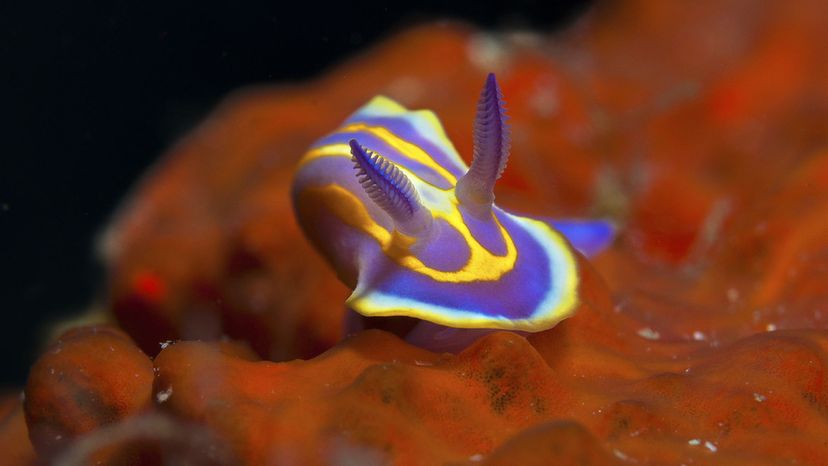
Image: Shutterstock
About This Quiz
Invertebrates or creatures without a spine are found throughout the earth, on land, in the sea, and in rivers. But can you identify them by just looking at an image? Do you have the backbone to succeed? Let's go!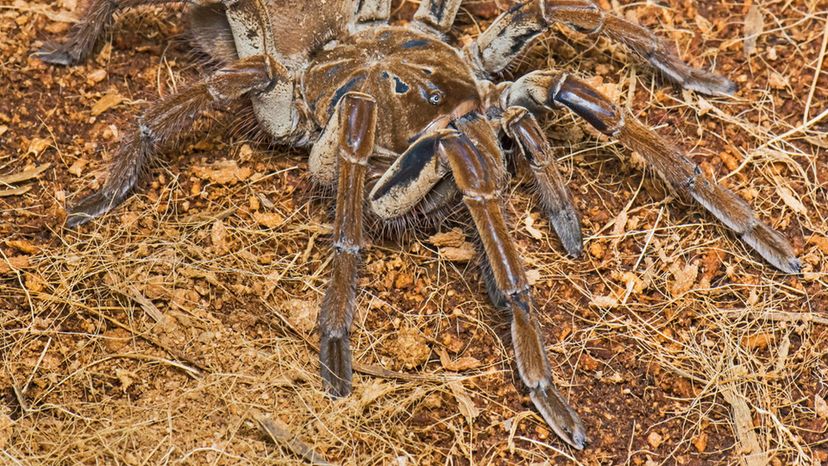
Shutterstock
What spineless creature is shown in this image?
Bark Scorpion
Daddy Long Legs Spider
Goliath Birdeater
A member of the Tarantula family, the Goliath Birdeater is found in South America, mostly in forested regions such as the Amazon. This nocturnal creature is huge! Their leg span alone can reach 30cm and their bodies grow to around 12cm. They can weigh up to 175g. Despite their name, they do not eat birds. These spiders prefer snakes, toads, earthworms, rodents, and lizards. Males live for about six years while females can live up to 25 years.
Silver Argiope
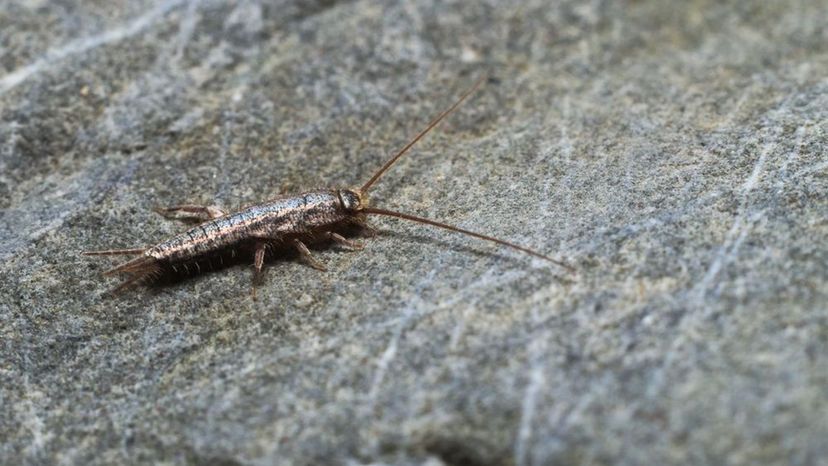
Shutterstock
What spineless creature is shown in this image?
Silverfish
These wingless creatures are silver in color. They are called silverfish because their bodies are covered in tiny scales, in much the same way a fish is. They can grow to around 20 mm long and live in the darker, damper areas of your home. Silverfish love to eat things containing starch, with the pages of books a particular favorite. Also known as fish moths, they can live for up to four years!
Flower Mantis
Mole Cricket
Millipede
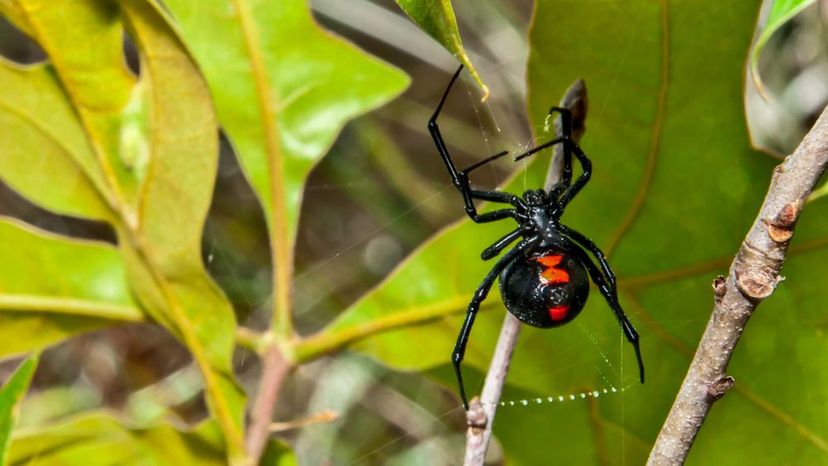
Shutterstock
What spineless creature is shown in this image?
Brazilian Salmon Pink Birdeater
Southern Black Widow
Found in the southeastern United States, the Southern Black Widow is certainly venomous. They are shiny black in color with a distinct red hourglass shape on their abdomen. The female's body length approaches 5cm when mature. Males are typically smaller. Females can survive for around 1 and a half years with males only reaching about six months.
Egyptian Fat-tailed Scorpion
Brown Widow
Advertisement
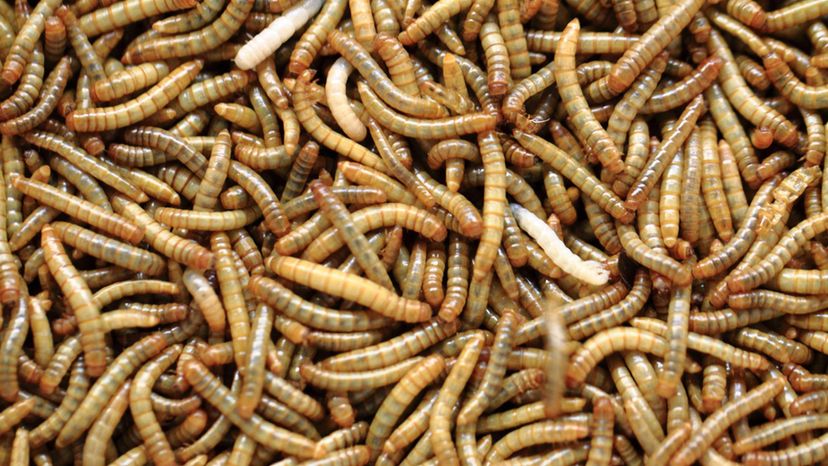
Shutterstock
What spineless creature is shown in this image?
Mealworm
The larvae of darkling beetles, mealworm are just part of the cycle from egg to adult beetle. They are generally found in darker places, for instance under logs or near decaying leaves where they feed on organic matter. Often, mealworms will provide a nice meal for birds, rodents, spiders, and reptiles. They are the perfect meal for fish, chickens or pet lizards.
Centipede
Caterpillar
Silkworm
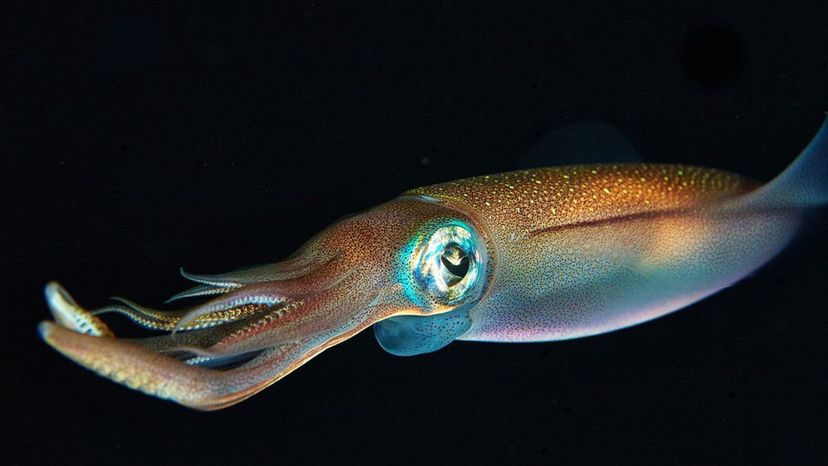
Shutterstock
What spineless creature is shown in this image?
Cuttlefish
Octopus
Squid
A 10-armed sea dweller, squids are from the cephalopod family. They come in a range of sizes and some can grow to as much as 20 meters in length. Two of their 10 arms have developed tentacles which the squid use to grab their prey. They themselves are a favored snack of most species of whales.
Man-O-War
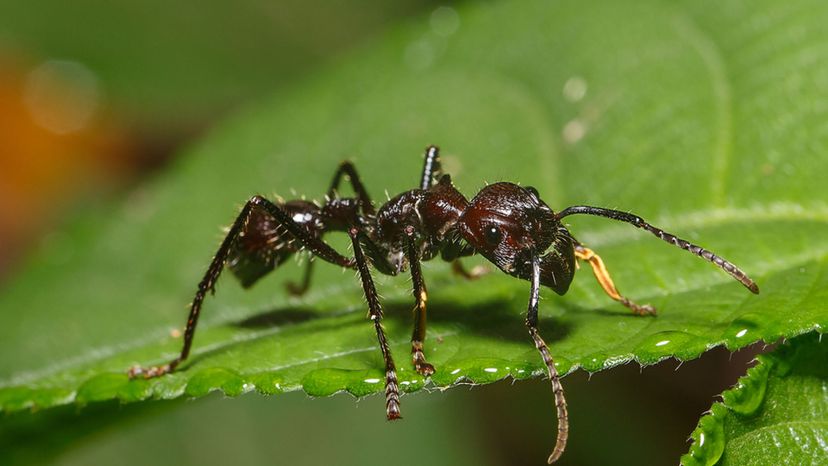
Shutterstock
What spineless creature is shown in this image?
Bullet Ant
Simply put, you don't want to be stung by a Bullet Ant. These insects have perhaps the most painful sting on record with people likening it to being hit by a bullet, hence their name. Luckily, these ants only live in Nicaragua, Paraguay, and Honduras. Generally, they grow to between 18 and 30 mm in length. The Sateré-Mawé tribe use the sting of the bullet ant as part of their initiation ritual for new warriors.
Termite
Longhorn Beetle
Milkweed Bug
Advertisement
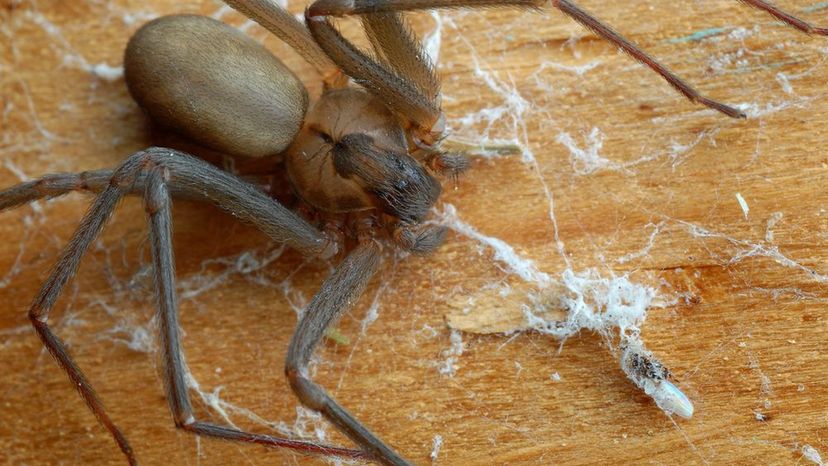
n/a
What spineless creature is shown in this image?
Ferocious Water Bug
Texas Gold Tarantula
Golden Silk Spider
Brown Recluse Spider
A Brown Recluse Spider is easily identified by the dark violin shape on their bodies. For this reason, they are often referred to as fiddle-back spiders. They are known to live in homes, barns or in basements, mostly in the central southern part of the United States ranging from Texas to Florida. These spiders will bite if provoked.
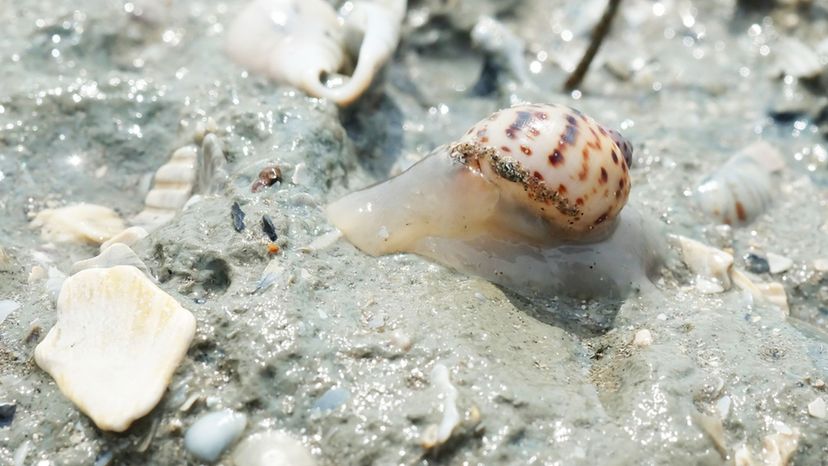
Shutterstock
What spineless creature is shown in this image?
Periwinkle
Periwinkles, sometimes called sea snails or whelks live in the ocean near rocky shores. They are commonly found in the Atlantic. Their shells can grow to around 38mm in length and 12mm in width but vary greatly. Periwinkles primarily feed on algae but sometimes will feed on smaller invertebrates than itself, especially the larvae from barnacles. Some specimen of periwinkle have lived for up to 20 years.
Hermit Crab
Limpet
Clam
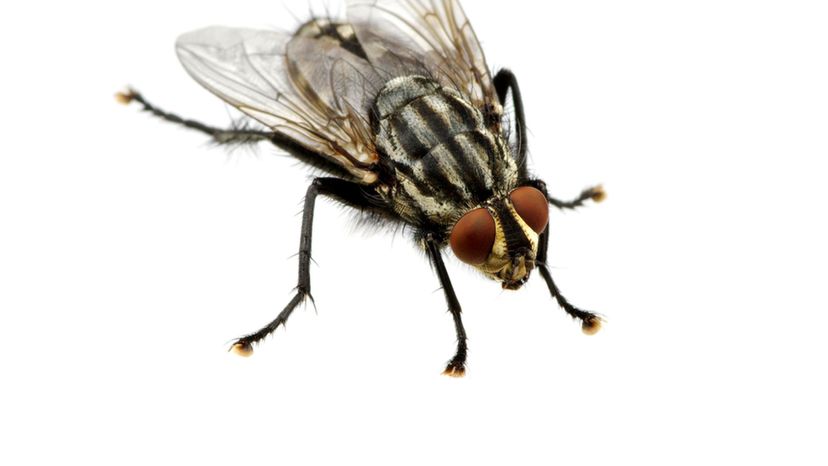
Shutterstock
What spineless creature is shown in this image?
Fruit Fly
Crane Fly
House Fly
Of the 300 000 species of flies in the world, the housefly is the most common and one we encounter every day. It is estimated that flies have been on the earth for the past 65 million years! These pests can flap their wings 200 times per second, allowing them to travel at speeds of up to 5 mph. They generally grow to about 1/4 inch in length. Despite having an eye that has 4000 lenses, their eyesight is poor. The common house fly will live for between 30 to 60 days.
Bot Fly
Advertisement
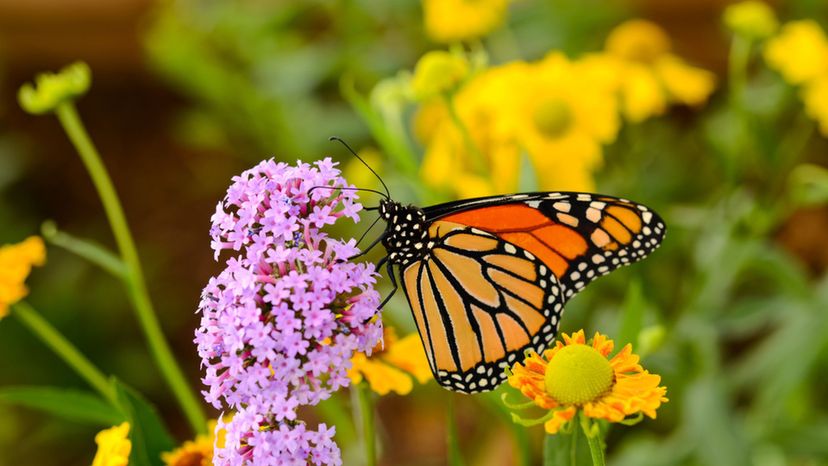
Shutterstock
What spineless creature is shown in this image?
Skipper
Swallowtail Butterfly
Monarch Butterfly
Monarch Butterflies are noted for the brilliant orange and black markings on their wings. There are two species of Monarch, one that lives in North America and one in South America. They are, however, found around the world, including in Europe, Australia, and Hawaii. Males carry a black spot on their hind wing which allows them to be identified from females. Generally, a full grown Monarch will have a wingspan of 10cm and weigh around 0.75 grams. They can flap their wings up to 720 times a minute.
Atlas Moth
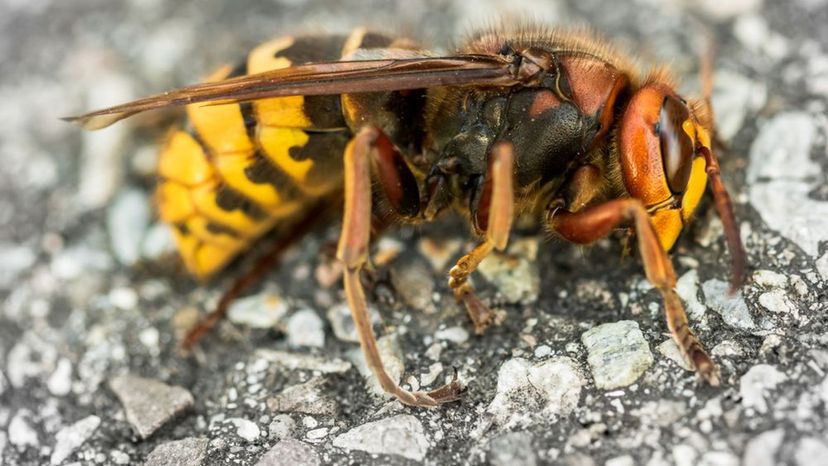
Shutterstock
What spineless creature is shown in this image?
Bumblebee
Asian Giant Hornet
The largest hornet species in the world and found in Asia, particularly in Japan where they are called the Giant Sparrow Bee. These hornets were discovered for the first time in 1852 by Frederick Smith. They can grow up to 4.5cm in length and have a wingspan of around 7cm. Their sting can be extremely dangerous and injects eight different types of chemicals into its victim. Worse still, it can sting repeatedly with its 1/4 inch long stinger. They prey on honey bees and can destroy hives in a couple of minutes. Around 40 people a year die from the sting of these hornets, most notably from having allergic reactions to multiple stings.
Black Wasp
Carpenter Bee
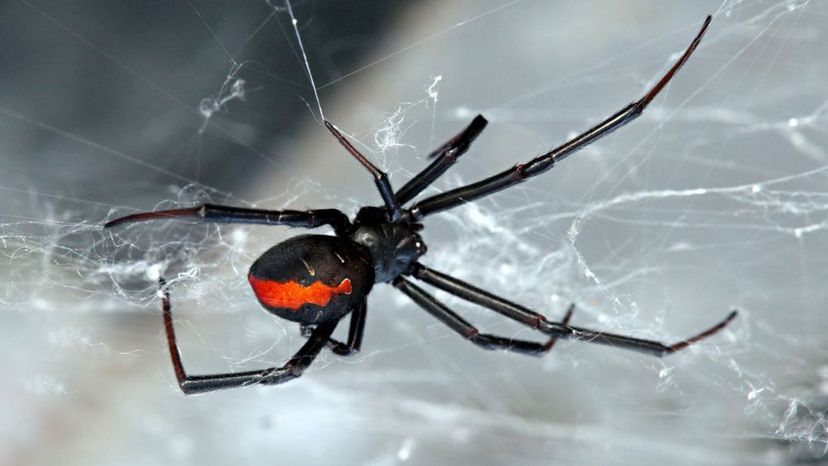
n/a
What spineless creature is shown in this image?
Chilean Rose Hair Tarantula
Black Widow
Redback Spider
Although they originated in Australia, the Redback Spider, one of the most dangerous in the world, is also found in Asia and New Zealand. This spider is a relative of the Black Widow. They normally have a dark black with a red/orange stripe on their abdomen and an hourglass on their underside although females have far brighter colors than males. Females grow up to 1cm in size with males up to 5mm. They feed on insects.
Daddy Long Legs
Advertisement

n/a
What spineless creature is shown in this image?
Silkworm
Snail
Snails are found in gardens around the world and have lived on earth for over 500 million years. They are noted for their spiral shells. In garden snails, these are generally different shades of brown. Although they are some of the most common, there are over 60,000 different species of snails on earth. Although most snails are hermaphrodites (both male and female), they generally mate in a regular way.
Slug
Tape Worm
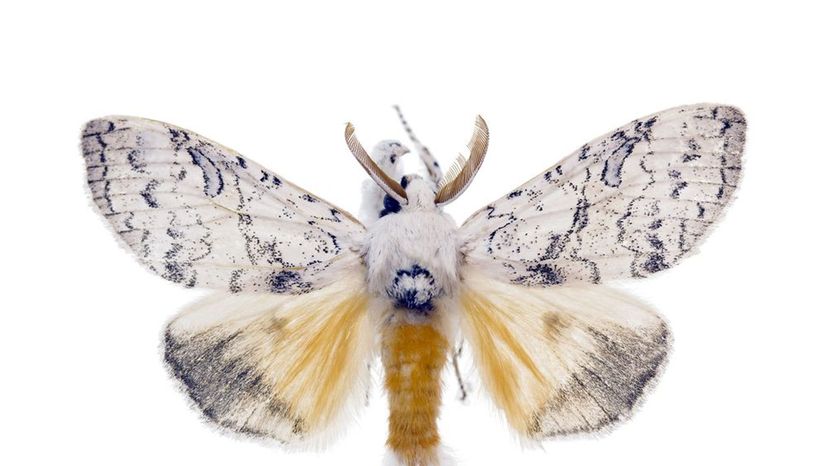
n/a
What spineless creature is shown in this image?
Butterfly
Moth
There are over 160,000 moth species on earth. These winged creatures are related to butterflies and come in a variety of shapes, colors, and sizes. Moth fossils dating back 190 million years have been found showing that these creatures have been on earth for a very, very long time. The largest moth in the world is the Atlas Moth. They can have wingspans of up to 25cm.
Bee
Wasp
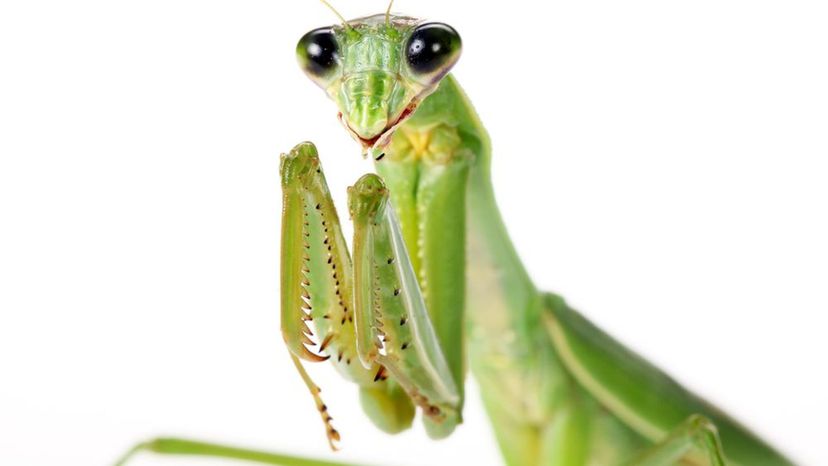
n/a
What spineless creature is shown in this image?
Spiny Flower Mantis
Tree Lobster
Stick Insect
Praying Mantis
There are over 2300 different species of Praying Mantis on the planet. Most of these are found in tropical areas with around 18 species found in North America. Praying Mantis feed on other insects which they catch with their large front legs. These have barbs on them so they can hold the insect in place while they devour them whole. It is the only insect, however, that can turn its head 180 degrees.
Advertisement
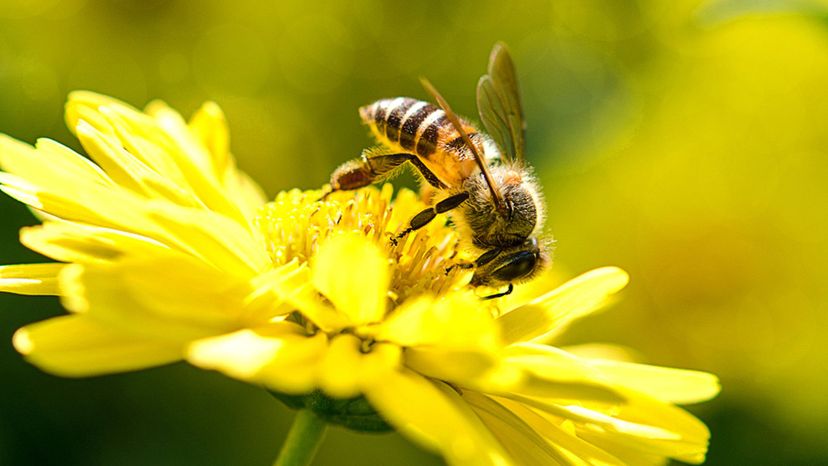
Shutterstock
What spineless creature is shown in this image?
Bumble Bee
Honey Bee
Honey Bees are actually relatives of wasps but not many people know that they are also related to ants. They are found all over the earth (just not Antartica). They live in a hive with a queen. Worker bees ensure that the hive is built and fed while the Queen's duty is to lay eggs. Drones, of which there are a few hundred, will mate with the queen. Honey bees live on nectar and pollen which they harvest from flowers. Queen bees can live for up to seven years and only leave the hive if a new home is necessary.
Sweat Bee
Black Wasp
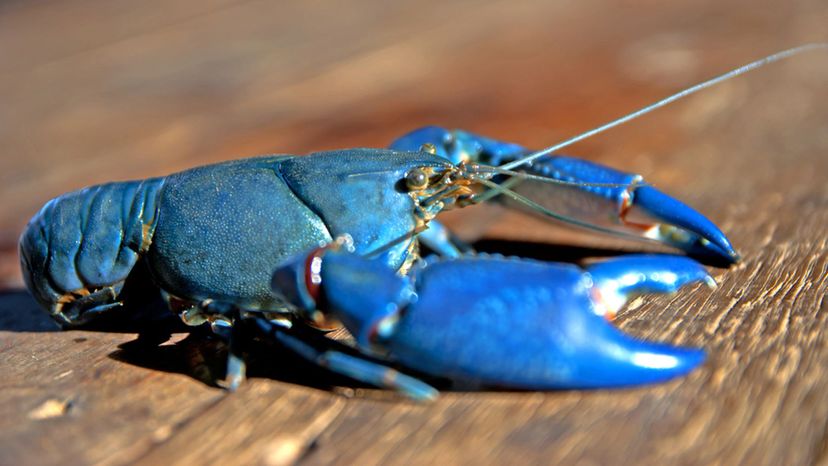
Shutterstock
What spineless creature is shown in this image?
Yabby
This freshwater crustacean is found in Australia. They often differ in color depending on the habitat they find themselves in. Yabbies can grow up to 150mm in length and generally eat rotting vegetation, although they have been known to eat each other, the remains of dead animals, worms, and insects. As they grow, Yabbies molt, discarding their exoskeleton.
Water Flea
Caridean Shrimp
Water Scorpion
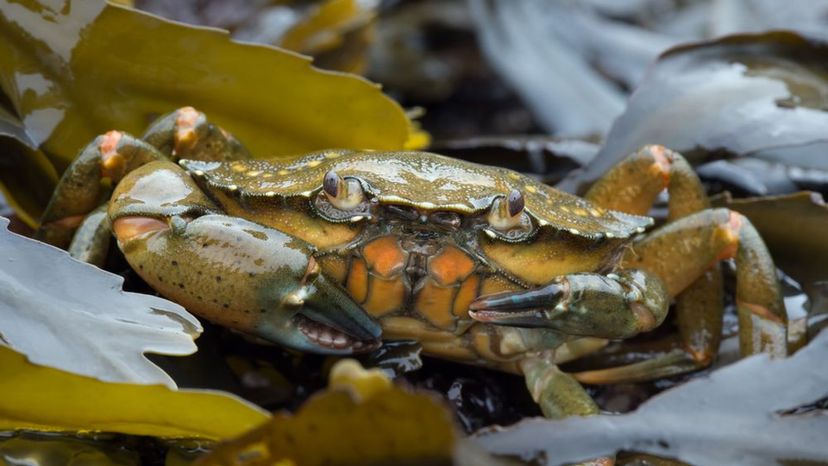
Shutterstock
What spineless creature is shown in this image?
Crayfish
Rock Lobster
Common Crab
Common Crabs come in a range of shapes, sizes, and colors. Often this is down to where in the world you encounter them. These crabs also live in a variety of environments, from rock pools to open, sandy beaches. Generally, they eat worms, mollusks, barnacles and other smaller crustaceans.
Krill
Advertisement
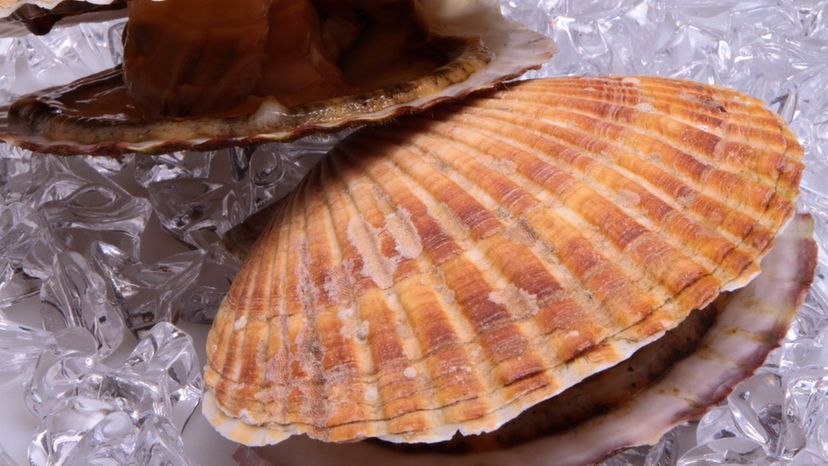
Shutterstock
What spineless creature is shown in this image?
Oyster
Great Scallop
Scallops are easily recognized by their shells which in fact, has been copied for the logo of the Shell Petroleum Company. Many people are unaware that these sea dwellers have the ability to swim, propelling themselves forward by opening and closing their shells very quickly. They feed by filtering the water around them, taking out plankton which they then feed on.
Razor Clam
Black Mussel
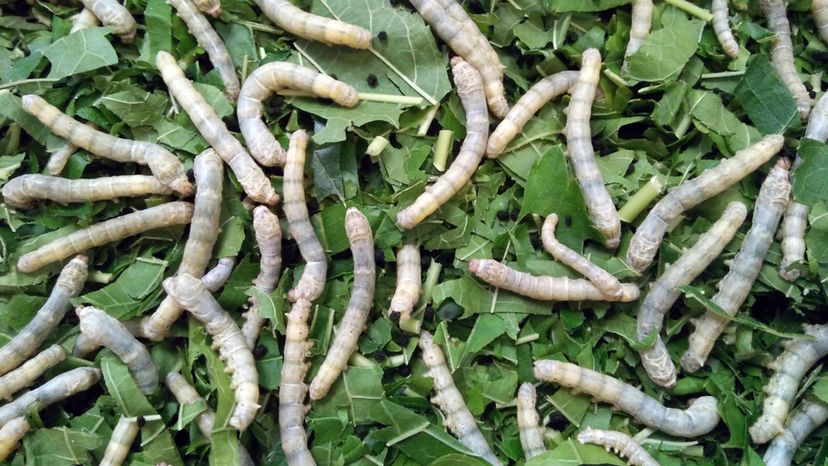
Shutterstock
What spineless creature is shown in this image?
Silkworm
A Silkworm is a stage in the development of the Silkworm Moth. The cycle obviously starts with a moth laying eggs, eggs hatch into worms which then become pupae and finally, a moth emerges. Silkworms spin pupae made from silk. Instead of spinning a pupae, they can be placed on shapes, such as a heart. In turn, they will use their silk to produce that shape, perfect in a classroom environment.
Flat Worm
Monarch Caterpillar
Centipede
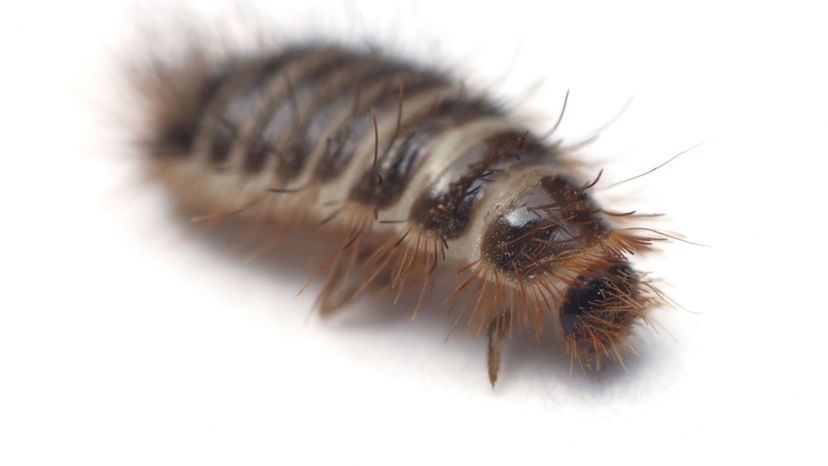
Shutterstock
What spineless creature is shown in this image?
Weevil
Stag Beetle
Scarab
Carpet Beetle
Not necessarily one type of beetle but a few different species, these insects are called Carpet Beetles for their ability to damage carpets and upholstery. They range in size, color, and overall appearance but generally are not more than 1/8 of an inch long. The most common species is the Black Carpet Beetle.
Advertisement
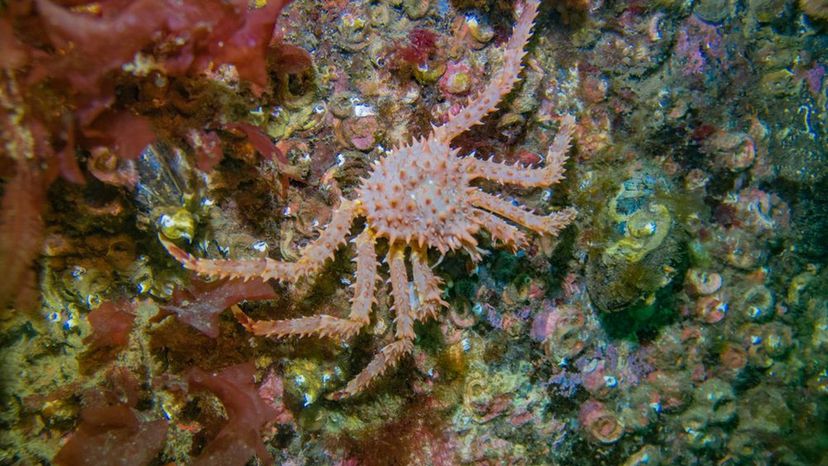
Shutterstock
What spineless creature is shown in this image?
Red King Crab
One of the most prized species of crab in the world, the Red King Crab are not really red but more burgundy in color. Many are caught in the waters of Bristol Bay off Alaska but they are found all over the northern hemisphere. These crabs can be massive. The biggest male ever caught weighed 24 pounds! They eat a variety of food including worms, clams, mussels, algae, barnacles, small fish and sometimes smaller crabs. They are one of the crabs fished on the reality TV show, "The Deadliest Catch."
Hermit Crab
Crayfish
Fiddler Crab
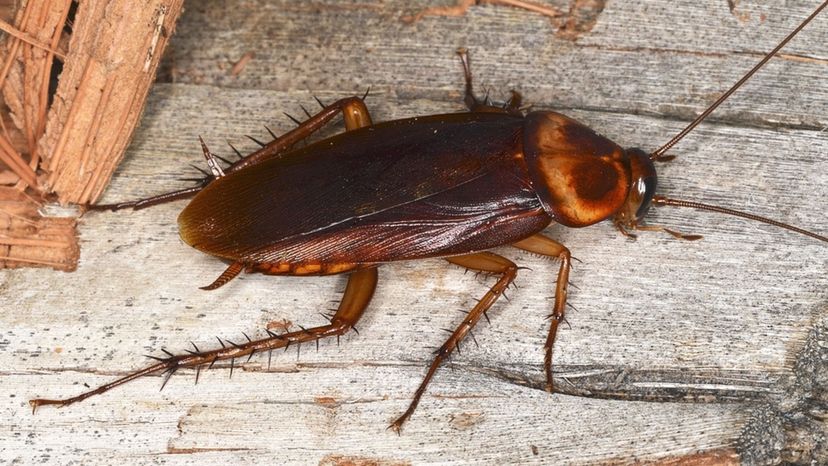
Shutterstock
What spineless creature is shown in this image?
Black Beetle
American Cockroach
A major pest in the United States, the American Cockroach is the largest cockroach found in the country. Interestingly, it is not native to America and is thought to have been introduced from Africa, traveling over on ships in the 1600s. These pests are generally reddish/brown and between 32 to 54mm in size. They are able to fly short distances and can bite but only do so rarely. Although they generally live outside, they will come into houses through drains where they tend to live in warm, moist areas.
June Bug
Ground Beetle
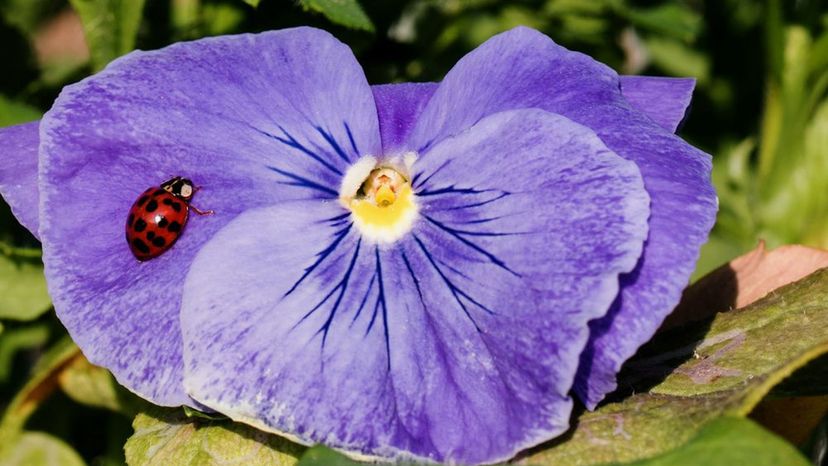
Shutterstock
What spineless creature is shown in this image?
Aphid
Harlequin Ladybird
These ladybirds are noted for their bright colors. They are often red/black or orange/black but many color combinations have been recorded. They were introduced into America during the 1980s, mostly as a way to control aphids. They quickly became the most abundant species of ladybird, however. Although their main diet is aphids, they will eat eggs and larvae from other ladybird species as well as caterpillar and moth eggs.
Harmonia
Asian Lady Beetle
Advertisement
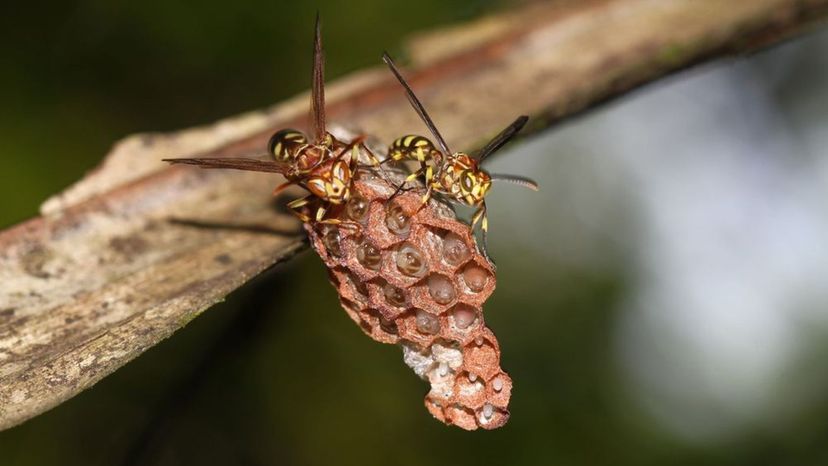
Shutterstock
What spineless creature is shown in this image?
Abispa
Eastern Cicada Killer
Black Hornet
Asian Predatory Wasp
Although this species of wasp originates in the Far East, it has started to invade other countries and has been found in Europe. Males grow to 24mm in length with the queen around 30mm. They are noted for their yellow legs and black/brown thorax. This is the easiest way to identify them. They also have a yellow face and a black head. Although they eat insects, dragonflies, and flies, they prefer honey bees and will stay in an area if they find a hive.
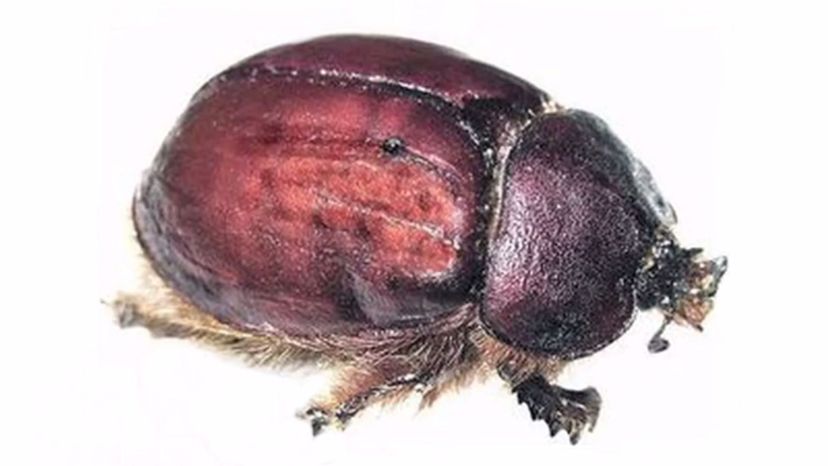
YouTube
What spineless creature is shown in this image?
Mite
Bed Bug
Cochineal
Cochineal are scale insects that are closely related to aphids and cicadas. They are very small and usually found on plants where they feed on the moisture within it. These creatures are used as a natural dye and have been since Aztec times. They were brought to Europe by the Spanish but kept a secret, so much so that people thought they were seeds at first. They are still used in products such as food coloring.
Aphid
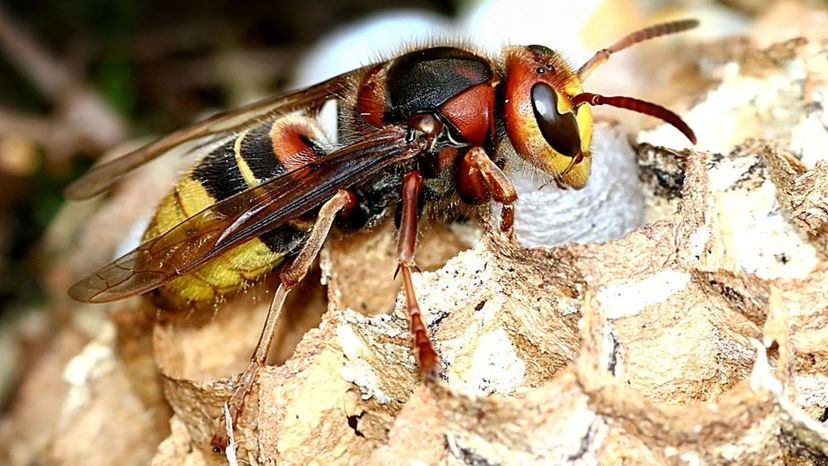
n/a
What spineless creature is shown in this image?
European Hornet
Although originating in Europe, this hornet was introduced into the United States in 1840. They grow to about 25mm in length (the queen will grow to 35mm) and are fairly aggressive, especially when defending their nests. Hornets eat caterpillars, flies, crickets and other hornets. Typically a colony will comprise around 300 workers as well as their queen. They can, however, be far larger.
Wolf Spider
Beewolf
Pompilus
Advertisement
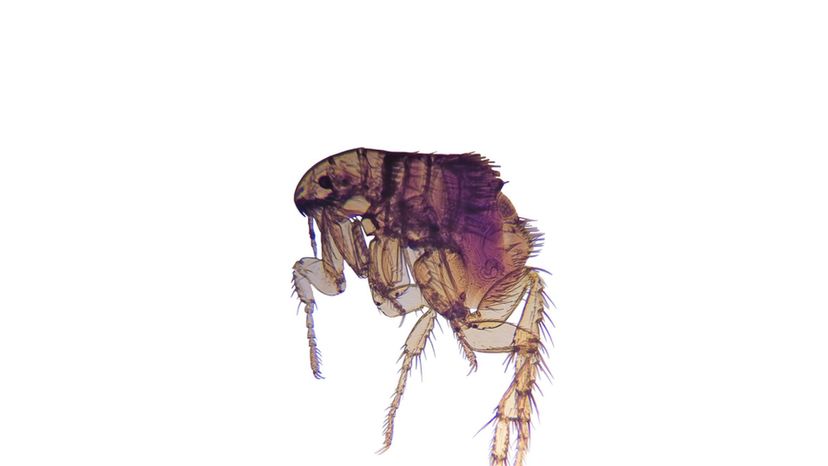
Shutterstock
What spineless creature is shown in this image?
Tick
Common Flea
Found all over the world, mostly on our domestic pets, fleas have four stages in their lifecycles. These are eggs, larva, pupa and adult. An adult flea will feed on the blood of any host it can find. During her lifetime, a female can lay up to 2000 eggs. Fleas can jump up to 15 times their own body height.
Bed Bug
Sticktight Flea

Shutterstock
What spineless creature is shown in this image?
White Mussel
Scallop
Fire Urchin
Don't let its beauty fool you, the Fire Urchin is a species of sea urchin not to be trifled with. With its beautiful red color, it is tempting to pick one of these up when spotted. This urchin is covered in poisonous spines which will deliver an incredible stinging pain that will continue for up to 15 minutes. It will not harm certain creatures, including Coleman Shrimp and Zebra Crab who use it as a form of protection from predators.
Sand Dollar
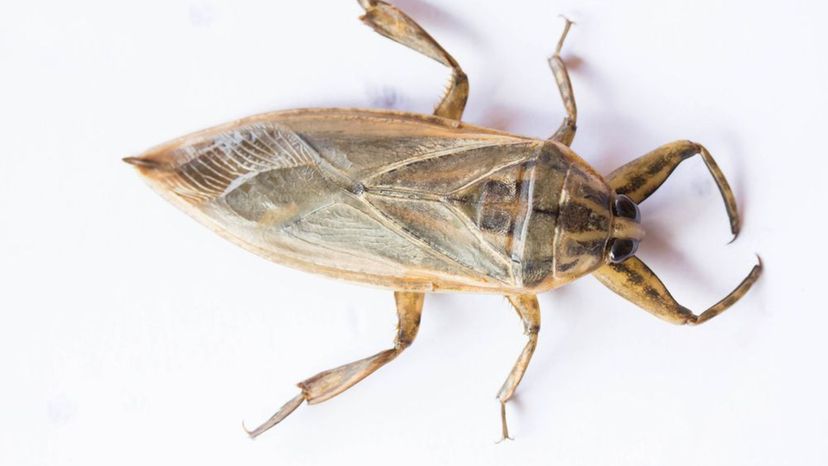
Shutterstock
What spineless creature is shown in this image?
Hickory Horned Devil
Giant Water Bug
Fondly known as toe biters or alligator ticks, these insects are huge, growing up to four inches in length. They are easily identified by their giant pincers which can deliver a very painful bite. They feed by grabbing their victims then using their beaks to inject digestive juices into their prey. After a few minutes, these juices turn the innards to liquid which the bug then consumes. In Thailand, they are eaten as a delicacy.
Water Scorpion
Giant Long-Legged Katydid
Advertisement
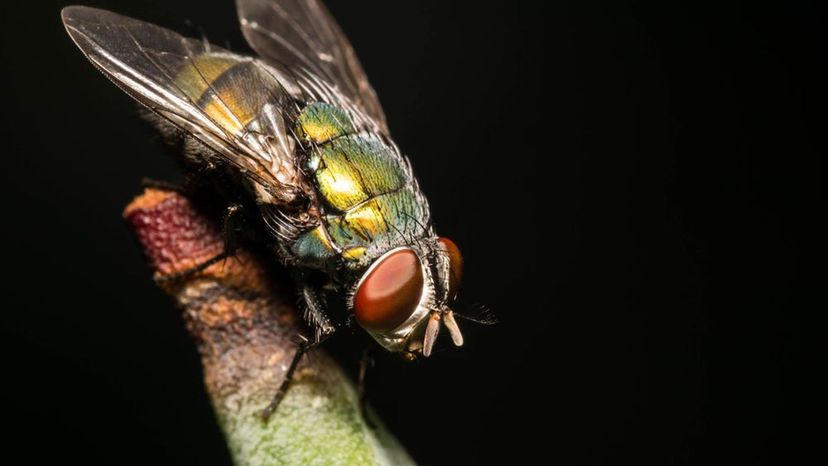
Shutterstock
What spineless creature is shown in this image?
Brachycera
Tsetse Fly
Horse Fly
Black Fly
Although these certainly look similar to ordinary house flies, they are easily identified as they are pitch black in color and have a humped back. They grow between 5 mm to 15 mm in size. These flies bite and feed on the blood of the person or animal they have bitten. If bitten, your body can react in different ways. For some, the bite is a mere irritation, while for others, it can lead to nausea, swelling, and dizziness.
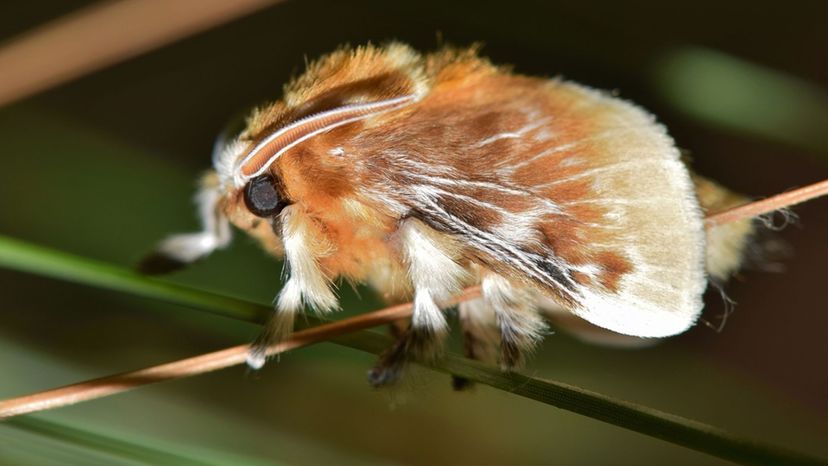
Shutterstock
What spineless creature is shown in this image?
Southern Flannel Moth
The Southern Flannel Moth is a real beauty. It is noted for its fuzzy look, with black feet and an orange thorax. Their wingspan can be as large as 3.5 cm. This moth caterpillar should be left well alone, however. It has many spiny needles that penetrate the skin, injecting venom that may require a visit to the doctor. In most cases, it will cause nausea and vomiting but in severe cases, it will cause respiratory problems.
Monarch Butterfly
Attacus Atlas
Diamondback Moth
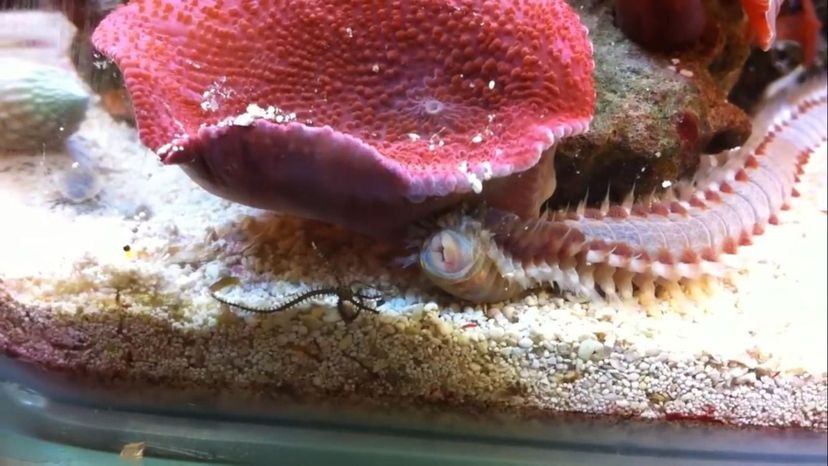
YouTube
What spineless creature is shown in this image?
Bobbit Worm
Blood Worm
Killer Bristle Worm
Over 10,000 species of Bristle Worm inhabit the sea, living in a range of environments from deep sea to coastlines. Some species can grow up to 10 feet long. All, however, are noted for the fleshy bits that appear on each segment of their body. This is called parapodia and each is covered in bristles. It is these bristles that can cause harm if a Bristle Worm is handled in any way, or perhaps stood on which often leads to a sting, rash, pain or swelling.
Palolo Worm
Advertisement
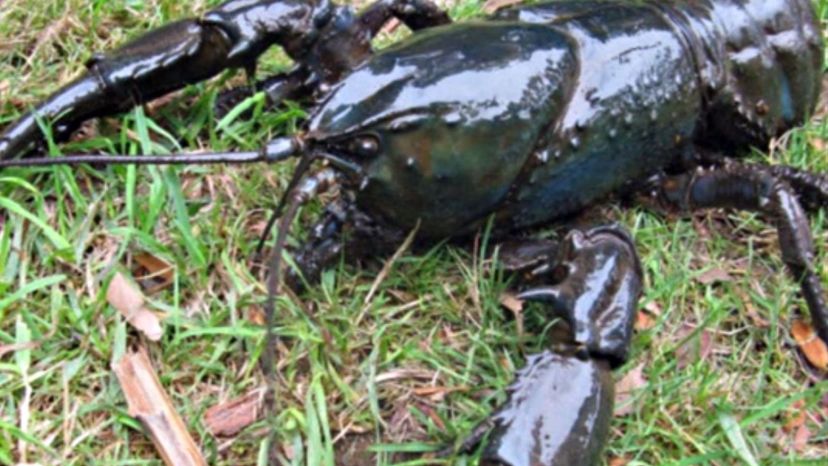
YouTube
What spineless creature is shown in this image?
Yabee
Giant Tasmania Crayfish
Living in fresh water, this is the largest invertebrate found anywhere in the world. Unfortunately, these creatures, which are only found on Tasmania off the coast of Australia, are endangered. Most adults will grow to around 120mm in size but sometimes, very large examples (around 400mm) weighing up to 6 kg, can be found. They live for up to 40 years. These crayfish eat both rotting wood and plants as well as insects.
Prawn
Spider Crab
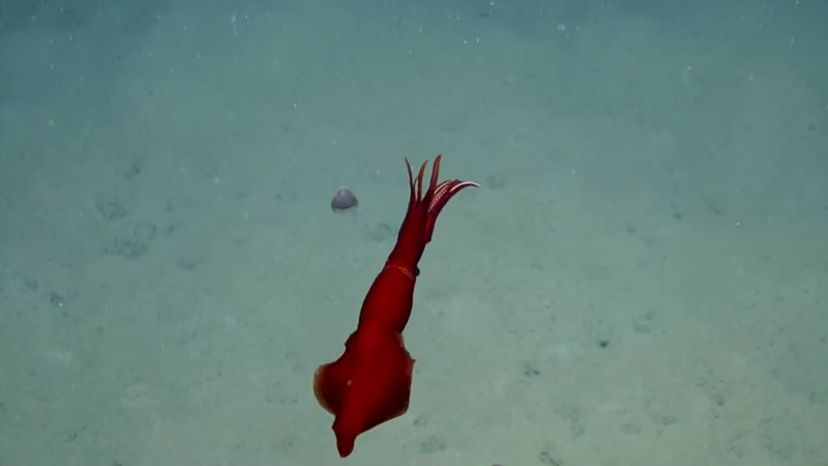
YouTube
What spineless creature is shown in this image?
Red Devil Squid
The Humboldt Squid or Diablo Rojo as it is known resides in the eastern Pacific. These are some of the largest squid found in the ocean. The length of their mantle can reach 4.9 feet! They are called Red Devil Squid as they tend to be quite aggressive, especially when hunting. During these periods, the squid will change color between red and white continuously thanks to the bioluminescent photophores in their bodies. They are found at depths of 660 to 2,300 feet and generally live for two years. There have been recorded cases of these squid attacking divers.
Octopus
Cuttlefish
Rock Lobser
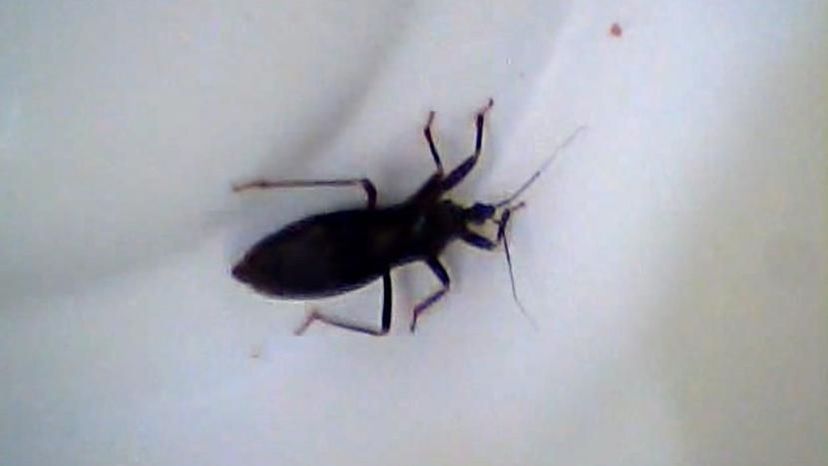
YouTube
What spineless creature is shown in this image?
Bed Bug
Amazon Cockroach
Black Corsair
A true assassin in the bug world, the Black Corsair is built to prey on other bugs. While the males can fly, females can't. These bugs are generally around 15mm to 20mm in length and normally black, although sometimes they can have red around the edges of their bodies. They have a massive mandible at the front of their mouths with which they hunt prey. They have been known to bite humans, especially when threatened. A bite can cause incredible pain.
Water Scorpion
Advertisement
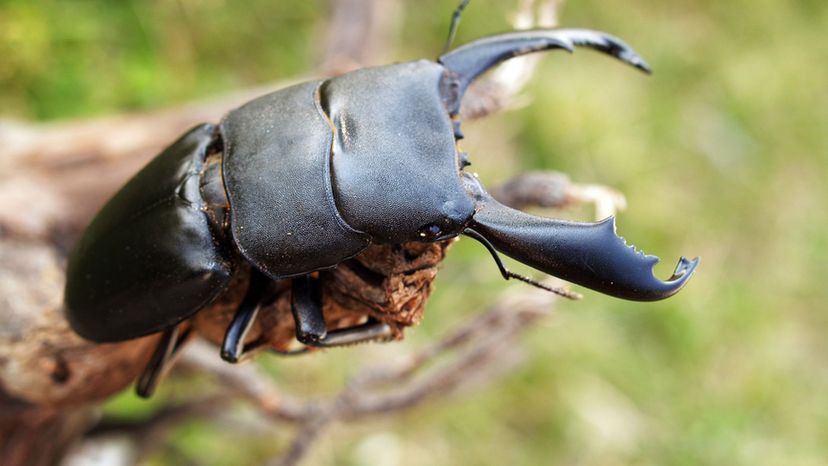
Shutterstock
What spineless creature is shown in this image?
Lady Bug
Titan Beetle
The Titan Beetle is the largest beetle on Earth. Found in the Amazon, this beetle can grow up to 6.6 inches in length and it has very large mandibles which can deliver a painful bite. They are often mistaken as cockroaches as they look fairly similar. In its adult form, it never eats. It just finds a mate with which to reproduce.
Long Horn Beetle
Stag Beetle
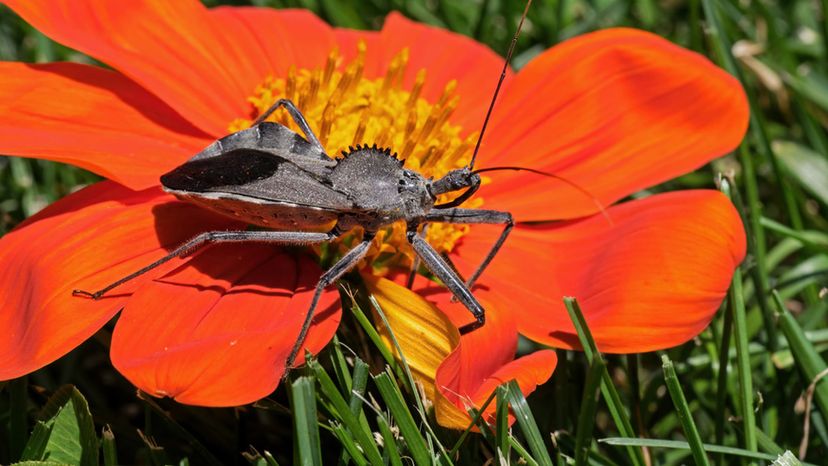
Shutterstock
What spineless creature is shown in this image?
Darkling Beetle
Drugstore Beetle
Dung Beetle
Wheel Bug
This large bug, which can grow up to one-and-a-quarter inches in size is named thanks to the round cog-like protrusion found on its thorax. Wheel bugs feed on smaller insects, moths, and caterpillars which they do by draining body fluids. Typically, they are found in and around Kentucky but are not aggressive.

Shutterstock
What spineless creature is shown in this image?
Grasshopper
Locust
Cockroach
Cricket
Crickets are very common insects found all over the world. Male crickets 'chirp' by rubbing their wings over their legs. Each species has a specific chirp. Crickets are closely related to grasshoppers. They have large rear legs which help them to jump in much the same way. Some species are able to fly but not all.
Advertisement
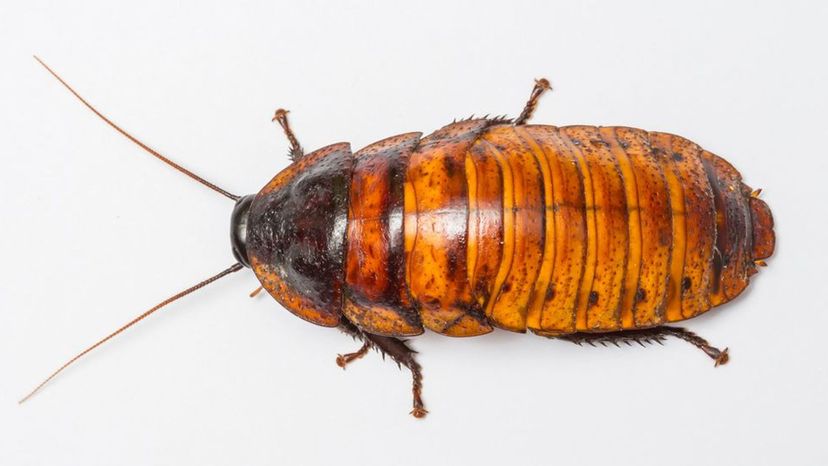
Shutterstock
What spineless creature is shown in this image?
Giant Cockroach
As with most large bugs, Giant Cockroaches are found in the Amazon. Here they live in trees behind bark, cracks in rocks or in caves. They feed on decaying plant matter, dead insects, bat guano and even fruit and seeds. They also provide a source of food for birds, lizards, and small mammals. Females grow up to 10cm while males are slightly smaller, reaching around 7.5cm.
Stag Beetle
June Bug
Ground Beetle
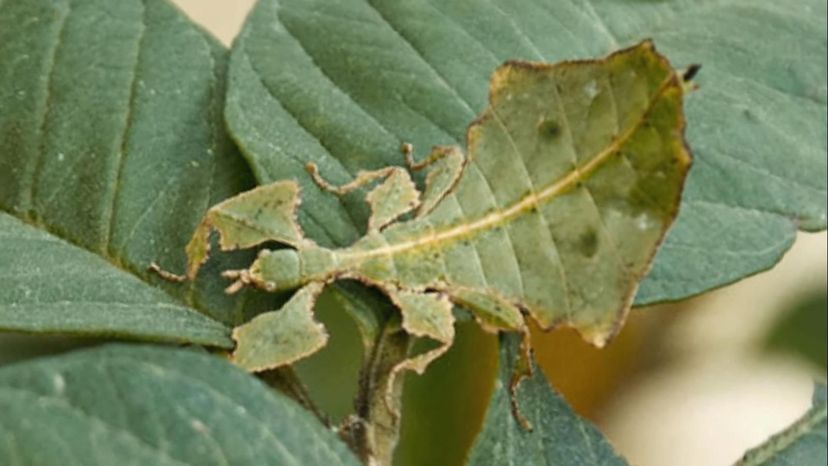
YouTube
What spineless creature is shown in this image?
Colorado Potato Beetle
Cabbage Maggot
Javanese Leaf Inspector
Also called the Javanese Leaf Insect, this bug is mostly found in Malaysia. These incredible insects are often mistaken for leaves... until they move. They even sway in the wind when it blows. Of course, they look this way to protect themselves from predators. Each insect also has a very flat body which is irregular in shape, just like a leaf. They are normally between 5 to 10cm long.
Milkweed Bug
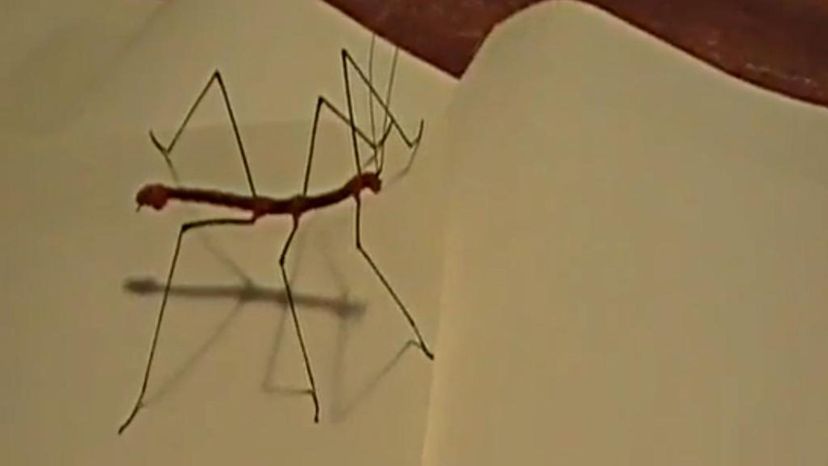
YouTube
What spineless creature is shown in this image?
Pond Skater
Stick Insect
Locust
Peruvian Firestick
This exotic stick insect lives in the rainforests of Ecuador and Peru. It is noted by its long, thin body as well as legs and is bright red in color. This is to warn any predators that might want to eat it for a tasty snack. When attacked, the Firestick will emit a foul-smelling, sticky fluid. These insects eat the leaves of ferns and can grow up to 30cm in length.
Advertisement
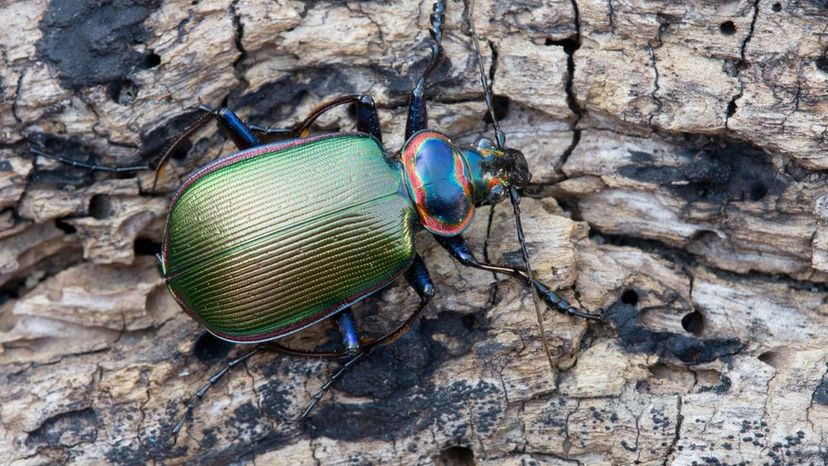
Shutterstock
What spineless creature is shown in this image?
Fiery Searcher Beetle
These bugs are noted for their beautiful colors that almost appear metallic. They are found in gardens throughout the United States growing to between 25 to 35mm. They are sometimes called caterpillar hunters as this is their main source of food. These beetles will even climb trees to find their prey. Adults will live for around a year.
Black Beetle
Blister Beetle
Leaf Beetle
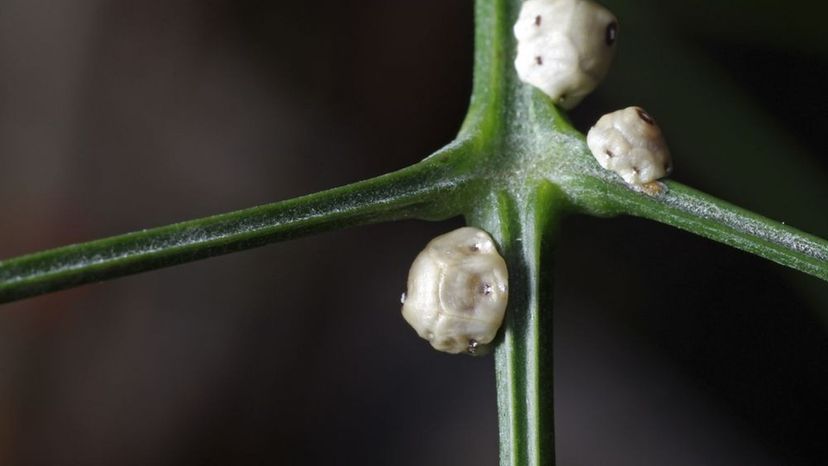
Shutterstock
What spineless creature is shown in this image?
Mealy Bug
Cochineal
Scale Insect
These small insects are found throughout the United States and with over 8000 different species, they differ fairly dramatically from one another. They also range in size with some as small as 1 mm while others can grow to 5 mm and sometimes larger. These are parasites that attach themselves to plants and suck the sap from them. They are considered to be pests and can harm crops if not dealt with.
Aphid
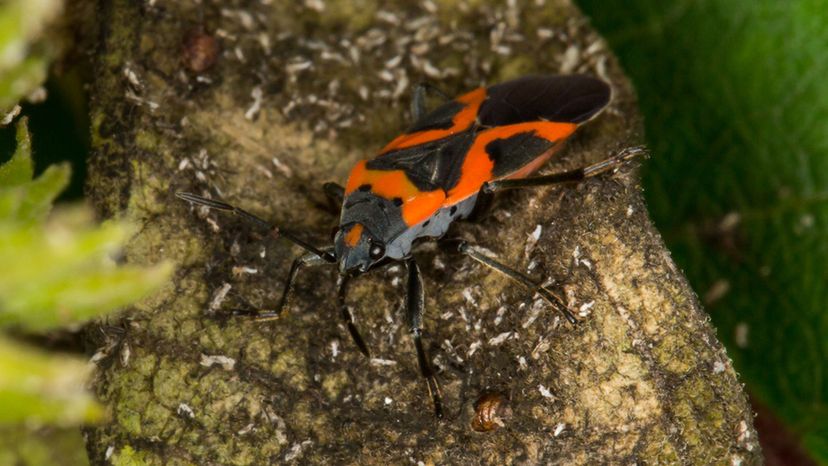
Shutterstock
What spineless creature is shown in this image?
Sap Beetle
Ground Beetle
Milkweed Bug
Milkweed Bugs are instantly recognizable for their red/orange and black markings. These bugs feed on plants, seeds, and leaves using a large proboscis near their mouths that suck the sap from whatever they are feeding on. They are particularly partial to Milkweed plants. These bugs are considered pests, particularly on commercial farmlands.
Soldier Beetle
Advertisement
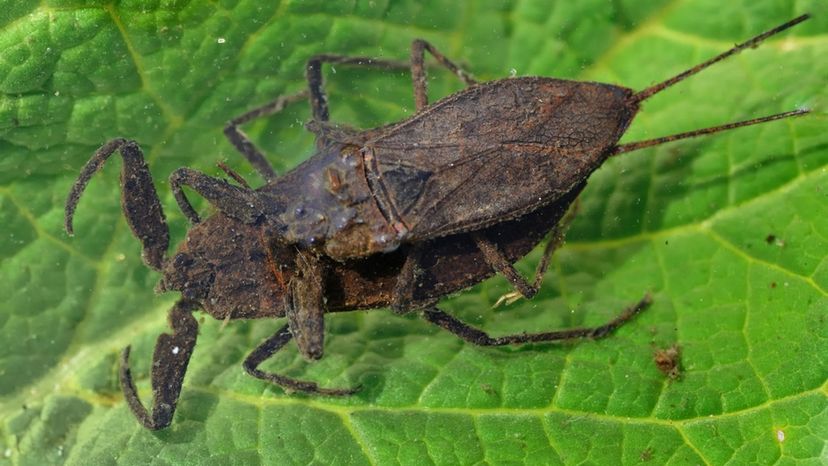
Shutterstock
What spineless creature is shown in this image?
Pond Skater
Rain Beetle
Whirligig Bug
Water Scorpion
Roughly resembling a regular scorpion, but without the sting, the Water Scorpion grabs its prey with large mandibles and then devours them. They generally feed on other insects but can take small fish as well. There are around 50 different species of this aquatic invertebrate. They are not particularly good swimmers but have two breathing tubes that protrude from the back of their body for when they enter the water. In general, they will lie in wait to ambush their prey.
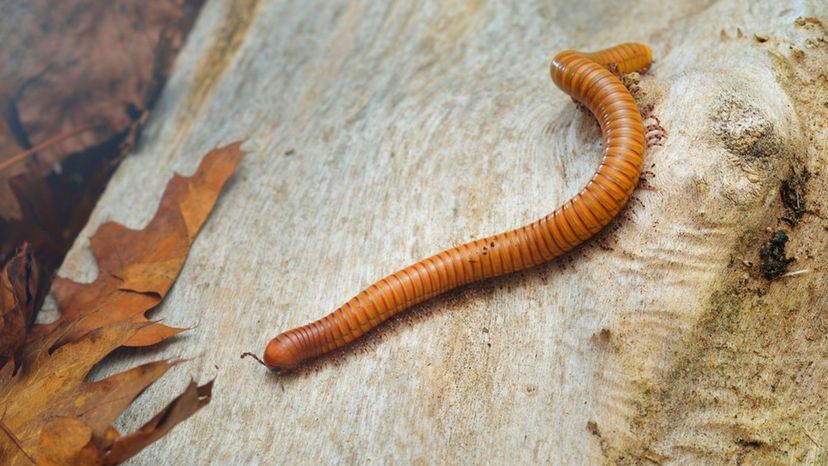
Shutterstock
What spineless creature is shown in this image?
Earthworm
Desert Millipede
These millipedes are generally yellow to light brown in color with dark bands circling their bodies. They can grow up to 6 inches long but most adults are around 4 inches in length. They are mostly found in the Chihuahuan and Sonoran deserts where they feed on bark, dead vegetation and sometimes other dead arthropods. Although they defend themselves by producing a combination of chemicals that make them taste unpleasant, scorpions still find them a tasty treat. These millipedes can live for up to 10 years.
Round Worm
Maggot

Shutterstock
What spineless creature is shown in this image?
Green Lynx Spider
This bright green spider with chevron markings on its abdomen is found mostly in the southern United States where it lives in amongst plants and shrubs. Here, they feed on insects and actually offer an effective form of plant protection. Although they are not aggressive, they can sometimes bite humans. There are two species found in the United States with some females growing up to 22mm in length. They can lay anywhere from 25 to 600 eggs at a time.
Tarantula
Black Widow
Daddy Long Legs
Advertisement
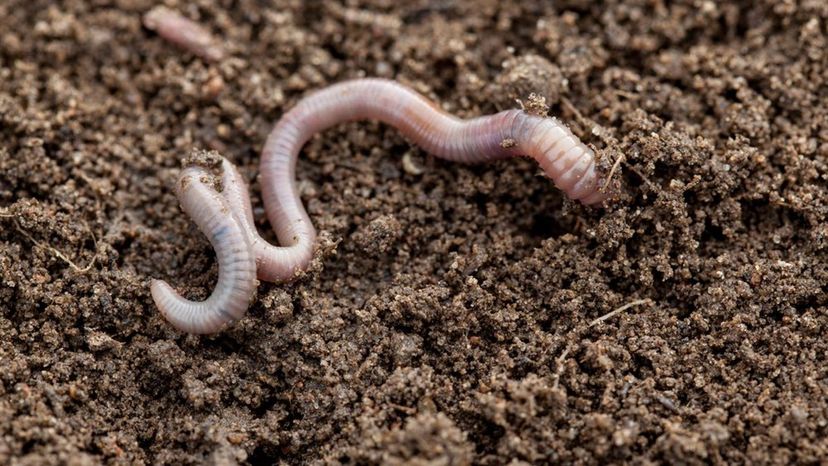
Shutterstock
What spineless creature is shown in this image?
Centipede
Millipede
Earthworm
This segmented worm is found in the soil where it lives, breaking down plant matter. They have many benefits for gardens in particular. Their tunneling helps aerate the soil while they are constantly helping to break down plant matter which effectively is a form of compost. The biggest ever earthworm was recorded in South Africa in 1937. It was an incredible 22 feet long.
Blackworm
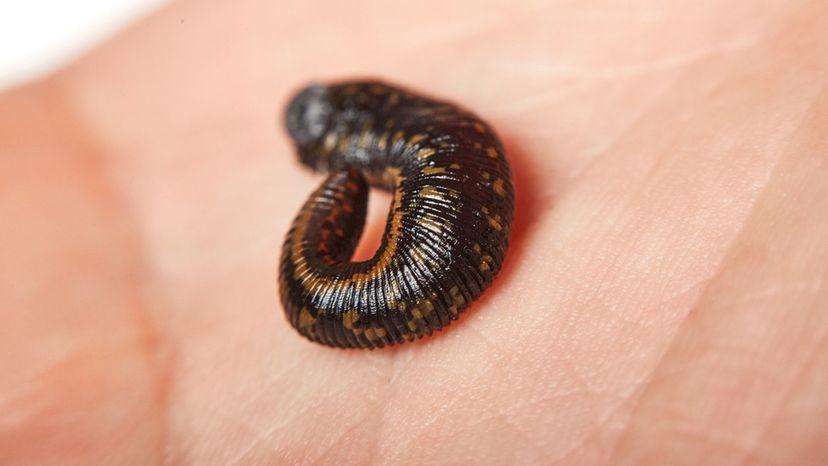
Shutterstock
What spineless creature is shown in this image?
Lice
Leech
These segmented worms mostly live in fresh water. Here they feed by eating other smaller invertebrates. Of the 700 identified species, only around 100 live in seawater. All leeches have suckers at both ends of their body. In some species, they use these to attach to animals and even humans to draw blood. But contrary to popular thought, not all leeches feed in this way.
Bed Bugs
Tick
You Got:
/50
Shutterstock